Zoom
Trash

Lasagna Garden - How to Make a Lasagna Garden. Lasagna gardening is a no-dig, no-till organic gardening method that results in rich, fluffy soil with very little work from the gardener.
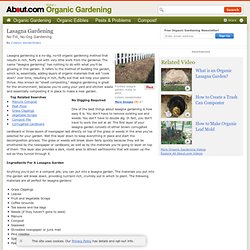
The name "lasagna gardening" has nothing to do with what you'll be growing in this garden. It refers to the method of building the garden, which is, essentially, adding layers of organic materials that will “cook down” over time, resulting in rich, fluffy soil that will help your plants thrive. Also known as “sheet composting,” lasagna gardening is great for the environment, because you're using your yard and kitchen waste and essentially composting it in place to make a new garden. No Digging Required. Living Fences: How-To, Advantages and Tips - Modern Homesteading. Fences on your farm or homestead define property boundaries and separate production zones (garden, pasture, orchard).

They provide privacy and security from animal (and perhaps human) intruders. They confine livestock and protect them from predators. They guard crop areas from wild raiders (such as deer) as well as animal allies (such as sheep and goats). Your first choice for such a multifunctional homestead necessity may be manufactured fencing: woven or electric wire, welded livestock panels, boards on pressure-treated posts, or even virgin or recycled plastic. Native American Seed - Wildflowers and Native Prairie Grasses.
Can Your Own Food. While the people of the United States become increasingly more dependent on the supermarket and restaurants to feed themselves, Doug Miller of Southeast Ohio is focused on becoming more self-sustaining.
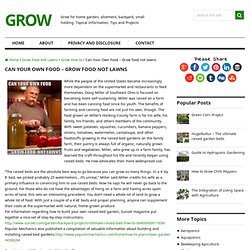
Miller was raised on a farm and has been canning food since his youth. The benefits of farming and canning food are not just his own, though. The food grown on Miller’s Hocking County farm is for his wife, his family, his friends, and others members of the community. With sweet potatoes, squashes, cucumbers, banana peppers, onions, tomatoes, watermelon, cantaloupe, and other foodstuffs growing in the raised-bed gardens on the family farm, their pantry is always full of organic, naturally grown fruits and vegetables. Miller, who grew up in a farm family, has learned the craft throughout his life and recently began using raised beds. Step by Step – Make your own Permaculture No Dig raised bed. Step by Step – Make your own Permaculture No Dig raised bed Posted by azulvaleriethome on December 12, 2012 · 19 Comments Raised Bed Workshop- Step by Step Using raised beds can be a great way to grow crops in small spaces.
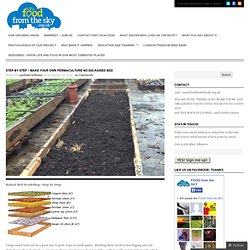
PositiveFoodie. This is so amazing and exciting!
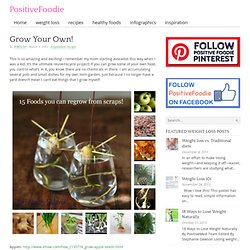
I remember my mom starting avocados this way when I was a kid. It’s the ultimate reuse/recycle project! Complete-guide-to-home-canning. Vegetable Planting Chart. How to plant a lettuce bed. Lettuce was the first vegetable I learned to grow, and it's still one of my favorites.
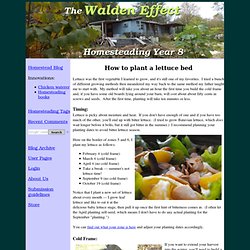
I tried a bunch of different growing methods then meandered my way back to the same method my father taught me to start with. My method will take you about an hour the first time you build the cold frame and, if you have some old boards lying around your barn, will cost about about fifty cents in screws and seeds. After the first time, planting will take ten minutes or less. Timing: Lettuce is picky about moisture and heat. If you don't have enough of one and if you have too much of the other, you'll end up with bitter lettuce.
Here on the border of zones 5 and 6, I plant my lettuce as follows: February 4 (cold frame)March 4 (cold frame)April 4 (no cold frame)Take a break --- summer's not lettuce time! Notice that I plant a new set of lettuce about every month --- I grow leaf lettuce and like to eat it at the delicious baby lettuce stage, then pull it up once the first hint of bitterness comes in. Home & Garden: Gardening Projects, Tips and Forecasts. Three Sisters Garden: Corn, Beans, Squash - A Native American tradition. Early European settlers would certainly never have survived without the gift of the Three Sisters from the Native Americans, the story behind our Thanksgiving celebration.
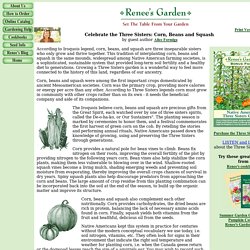
Celebrating the importance of these gifts, not only to the Pilgrims but also to civilizations around the globe that readily adopted these New World crops, adds meaning to modern garden practices Success with a Three Sisters garden involves careful attention to timing, seed spacing, and varieties. In many areas, if you simply plant all three in the same hole at the same time, the result will be a snarl of vines in which the corn gets overwhelmed! Instructions for Planting Your Own Three Sisters Garden in a 10 x 10 square When to plant:Sow seeds any time after spring night temperatures are in the 50 degree range, up through June.
What to plant: Corn must be planted in several rows rather than one long row to ensure adequate pollination. 1. 2. 3. 4. 5. 6. Milberger Landscaping & Nursery. Organic Gardening, Modern Homesteading, Renewable Energy, Green Homes, DIY Projects – MOTHER EARTH NEWS. Organic Gardening Supplies. Sites-Gardeners-Site. Learning to live a life sustainable. The Compete Book of Self-Sufficiency « GROWtest.org. Woven Planter. Potting Bench. Hydroponic System. Green House. A Garden for the House — Home & Garden Inspiration from Kevin Lee Jacobs. Buy Organic, Non-GMO, Non-Hybrid, Heirloom Vegetable Seeds Online.